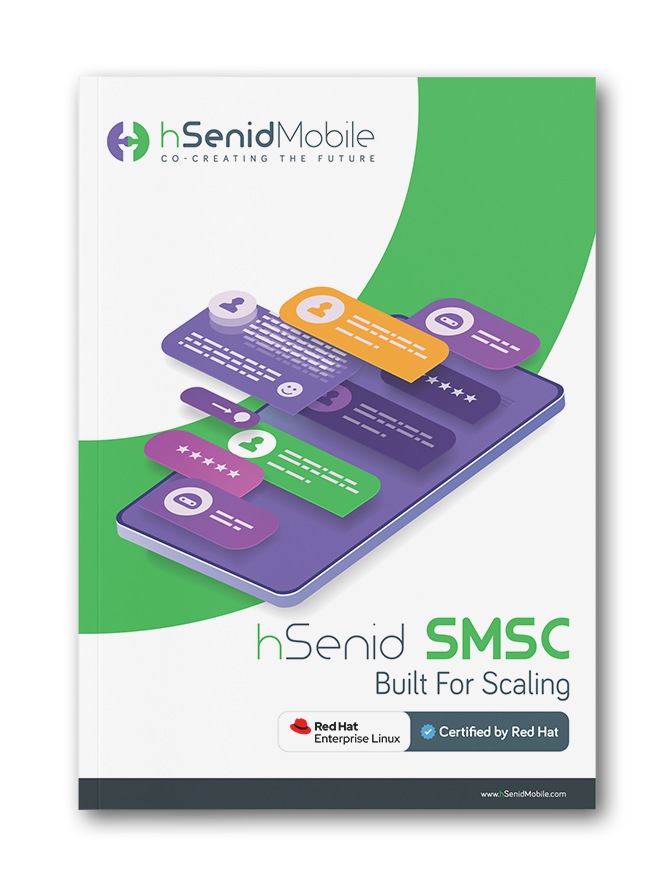As we move into the digital age, mobile messaging remains a powerful
communication tool across industries. Telecom operators, aggregators, and
enterprises are consistently looking for efficient, scalable, and
high-performance infrastructure to support SMS operations. At the heart of
this lies the SMSC platform—a core system responsible for sending, receiving,
storing, and forwarding SMS messages. But in 2025, should you build your own
or buy a proven platform?
This decision can define not only your messaging infrastructure’s cost and performance but also your long-term competitiveness and adaptability in a 5G and AI-driven world. Let’s break down the factors you should consider when deciding whether to build or buy an SMSC.
Before diving into the decision-making, it’s important to understand what an SMSC (Short Message Service Center) does. The SMSC is a telecom-grade system responsible for handling all aspects of SMS communication—routing, delivery, retries, queuing, and interoperability with other network elements.
With the rise of CPaaS (Communications Platform as a Service) and the growing demand for seamless SMS delivery across 4G and 5G networks, a modern SMSC must support:
Whether you’re an MNO, MVNO, or messaging aggregator, your SMSC is mission-critical.
Pros:
Cons:
In short, unless you already have deep telecom protocol expertise and a generous development budget, building an SMSC from scratch in 2025 may not be worth the risks.
Factor | Build In-House | Buy (e.g., hSenid SMSC)
In 2025, the telecom landscape demands speed, compliance, reliability, and flexibility. The build-vs-buy debate may have favored in-house solutions a decade ago, but with the rapid pace of change, most operators today find better value in buying a robust SMSC.
hSenid Mobile’s SMSC offers all the functionality needed in a modern deployment—real-time charging, full SMPP support, seamless integration into LTE/5G networks, and tools to ensure zero message loss. Its modular, high-availability design makes it ideal for both greenfield deployments and legacy migrations.
In a rapidly evolving telecom environment, agility and reliability are key. While building your own SMSC platform may offer customization and control, the long development cycles, maintenance complexities, and scalability risks make it a costly and uncertain path, especially in 2025, when time-to-market and future-proofing are critical.
On the other hand, investing in a trusted, scalable, and feature-rich solution like the hSenid SMSC offers speed, resilience, and operational efficiency out of the box. It empowers operators to deliver high-quality SMS services at scale, stay competitive in a 5G world, and focus on growth instead of infrastructure challenges.
For businesses aiming to streamline operations, reduce costs, and unlock new revenue from messaging services, the answer is clear: buying a proven SMSC platform is the smarter move in 2025, and hSenid Mobile is the partner to help you get there.
This decision can define not only your messaging infrastructure’s cost and performance but also your long-term competitiveness and adaptability in a 5G and AI-driven world. Let’s break down the factors you should consider when deciding whether to build or buy an SMSC.
Understanding the Role of an SMSC Platform
Before diving into the decision-making, it’s important to understand what an SMSC (Short Message Service Center) does. The SMSC is a telecom-grade system responsible for handling all aspects of SMS communication—routing, delivery, retries, queuing, and interoperability with other network elements.
With the rise of CPaaS (Communications Platform as a Service) and the growing demand for seamless SMS delivery across 4G and 5G networks, a modern SMSC must support:
- High scalability (handling millions of messages/day)
- Real-time charging and billing
- Integration with IMS and IP-SM Gateways
- Failover protection and clustering
- SMPP and SIGTRAN compatibility
Whether you’re an MNO, MVNO, or messaging aggregator, your SMSC is mission-critical.
Building an SMSC Platform: Pros and Cons
Pros:
- Full control over architecture: Custom-built platforms give you complete control over the system’s design and functionality.
- Tailored features: You can design the system to fit specific routing logic, message formats, and custom integrations.
- Internal expertise development: Building in-house fosters stronger internal understanding and technical mastery.
Cons:
- Long time to market: Developing an SMSC from scratch can take 12–24 months or more, delaying service launches.
- High upfront cost: Building requires a significant investment in development teams, testing environments, and hardware.
- Maintenance overhead: Continuous updates, compliance with evolving telecom standards, and security patching can stretch your resources thin.
- Scalability risks: Building a robust, carrier-grade, horizontally scalable architecture like hSenid’s takes years of trial and refinement.
In short, unless you already have deep telecom protocol expertise and a generous development budget, building an SMSC from scratch in 2025 may not be worth the risks.
Buying an SMSC Platform: What You Gain
- Fast Deployment: Ready-made SMSC solutions like the hSenid SMSC allow you to go live quickly, sometimes within weeks. They’re pre-tested, compliant with industry standards (such as 3GPP, SIGTRAN, and SMPP), and come with a proven track record.
- Lower Total Cost of Ownership: hSenid’s SMSC eliminates the need for third-party SIGTRAN stacks or SS7 cards, significantly reducing integration costs. With a modular design, it supports scaling up or out as needed, without requiring architectural changes.
- High Availability and Quality of Service: hSenid Mobile’s SMSC offers cluster-based high availability (HA) with no single point of failure. It ensures uninterrupted message delivery, even during traffic surges. Features like overload protection, forward-and-store delivery, and advanced routing rules minimize message loss and maximize uptime.
- Advanced Interoperability: The platform supports 4G/5G SMS interworking for IMS-enabled networks and can integrate seamlessly with modern IP-SM Gateways or 5G SMSFs, unlocking revenue opportunities in next-gen messaging.
- Operational Tools & Portals: Built-in User Management and Customer Care Portals allow easy administration, CDR access, and real-time traffic monitoring. These are hard to replicate in custom builds.
Key Factors to Consider When Making the Decision
Factor | Build In-House | Buy (e.g., hSenid SMSC)
| Factor | Build In-House | Buy (e.g., hSenid SMSC) |
|---|---|---|
| Time to Market | 12–24 months | Weeks to a few months |
| Cost | High upfront, ongoing development | Lower TCO, modular pricing |
| Customization | Fully customizable | Configurable, extendable |
| Compliance & Updates | Requires a dedicated team | Included with vendor support |
| Support & Maintenance | In-house responsibility | Provided by vendor |
| Scalability | Risk of technical debt | Proven large-scale handling |
SMSC Platform in 2025: The Verdict
In 2025, the telecom landscape demands speed, compliance, reliability, and flexibility. The build-vs-buy debate may have favored in-house solutions a decade ago, but with the rapid pace of change, most operators today find better value in buying a robust SMSC.
hSenid Mobile’s SMSC offers all the functionality needed in a modern deployment—real-time charging, full SMPP support, seamless integration into LTE/5G networks, and tools to ensure zero message loss. Its modular, high-availability design makes it ideal for both greenfield deployments and legacy migrations.
Conclusion
In a rapidly evolving telecom environment, agility and reliability are key. While building your own SMSC platform may offer customization and control, the long development cycles, maintenance complexities, and scalability risks make it a costly and uncertain path, especially in 2025, when time-to-market and future-proofing are critical.
On the other hand, investing in a trusted, scalable, and feature-rich solution like the hSenid SMSC offers speed, resilience, and operational efficiency out of the box. It empowers operators to deliver high-quality SMS services at scale, stay competitive in a 5G world, and focus on growth instead of infrastructure challenges.
For businesses aiming to streamline operations, reduce costs, and unlock new revenue from messaging services, the answer is clear: buying a proven SMSC platform is the smarter move in 2025, and hSenid Mobile is the partner to help you get there.








